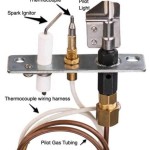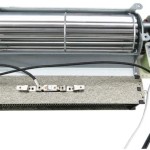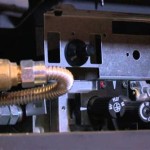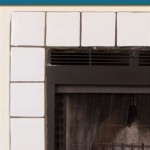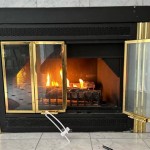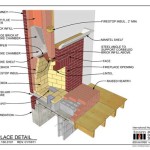Spray Painting Brass Fireplace Doors: A Comprehensive Guide
Brass fireplace doors, once a symbol of classic elegance, can become dated and detract from a contemporary aesthetic. Replacing these doors can be costly, but a more economical and efficient solution lies in spray painting them. This article provides a detailed guide on how to successfully spray paint brass fireplace doors, transforming their appearance and revitalizing the look of the fireplace.
The process, while seemingly straightforward, requires careful preparation, the correct materials, and a methodical approach to ensure a durable and aesthetically pleasing finish. Failing to adhere to these principles can result in peeling paint, uneven coverage, and ultimately, a less than satisfactory outcome. Therefore, understanding each step thoroughly before commencing is crucial.
Preparing the Brass Fireplace Doors for Painting
This is arguably the most critical stage of the entire process. Proper preparation ensures that the paint adheres correctly and the final finish is smooth and long-lasting. Neglecting this stage can lead to paint failure, requiring a complete redo.
The initial step involves removing the fireplace doors from the fireplace opening. Carefully detach the doors, noting any screws or fastening mechanisms. It is advisable to take photographs or create a diagram to aid in reassembly later. Once removed, place the doors on a protected work surface, such as a drop cloth or newspaper, in a well-ventilated area.
The next step is thorough cleaning. Over time, brass fireplace doors accumulate dust, soot, grease, and other contaminants. These impurities will prevent the paint from adhering properly. Use a strong degreaser, specifically formulated for metal surfaces, to remove any grease or oily residues. Apply the degreaser according to the manufacturer's instructions, typically involving spraying the surface and wiping it clean with a lint-free cloth. Repeat this process until the surface is completely clean.
Following degreasing, it is essential to remove any existing loose paint or rust. Use a wire brush or sandpaper (medium grit) to gently scrub the surface. Focus on areas where the existing finish is peeling or flaking. For stubborn rust, a rust remover specifically designed for metal can be employed. Follow the product's instructions carefully, ensuring adequate ventilation. After removing loose paint and rust, wipe the surface clean with a damp cloth to remove any debris.
Sanding the brass surface is paramount for creating a suitable surface for the primer to adhere to. Use fine-grit sandpaper (220-320 grit) to lightly sand the entire surface of the doors. This process, known as "scuff sanding," creates microscopic scratches on the brass, providing a mechanical bond for the primer. Ensure that the sanding is uniform across the entire surface. After sanding, thoroughly wipe the surface with a tack cloth to remove any remaining dust particles. A tack cloth is a specially treated cloth that attracts and holds dust, preventing it from contaminating the paint finish.
Finally, masking off any areas that are not to be painted is crucial. This includes any glass panels, hinges, or decorative elements that should remain brass or a different color. Use painter's tape, specifically designed for delicate surfaces, to carefully mask off these areas. Ensure that the tape is applied firmly and smoothly to prevent paint bleed. For complex shapes or intricate details, consider using a liquid masking product, which can be applied with a brush and peeled off after painting.
Selecting the Right Primer and Paint
Choosing the appropriate primer and paint is essential for achieving a durable and aesthetically pleasing finish. The primer serves as an intermediary layer between the brass and the paint, promoting adhesion and preventing corrosion. The paint provides the final color and protection.
For brass fireplace doors, a self-etching primer is highly recommended. Self-etching primers contain phosphoric acid, which etches the metal surface, creating an even stronger bond. This type of primer is particularly effective on non-ferrous metals like brass, which can be notoriously difficult to paint. Apply the primer in thin, even coats, following the manufacturer's instructions. Allow the primer to dry completely before proceeding to the next step.
When selecting the paint, choose a high-quality, heat-resistant paint specifically designed for metal surfaces. These paints are formulated to withstand the high temperatures generated by a fireplace. Options include heat-resistant enamel paints and specialized fireplace paints. Consider the desired finish, such as matte, satin, or gloss, and select a paint that matches the overall aesthetic of the room. Aerosol spray paint is generally the preferred method for applying paint to fireplace doors, as it allows for a smooth and even finish. However, brush-on paints can also be used, particularly for intricate details or touch-ups.
Always read and follow the manufacturer's instructions for both the primer and the paint. This includes information on drying times, application techniques, and safety precautions. Using incompatible products can result in paint failure or other undesirable outcomes.
Before committing to a specific color, test the paint on a small, inconspicuous area of the doors to ensure that it matches the desired color and finish. This allows for adjustments to be made before painting the entire surface.
The Spray Painting Process
Once the doors are properly prepared and the correct primer and paint have been selected, the actual spray painting process can begin. This stage requires patience, attention to detail, and a steady hand to achieve a flawless finish.
Before spraying, ensure that the area is well-ventilated and protected from overspray. Cover any surrounding surfaces with drop cloths or plastic sheeting. Wear appropriate safety gear, including a respirator mask, safety glasses, and gloves, to protect yourself from inhaling fumes and getting paint on your skin.
Shake the spray paint can vigorously for at least two minutes to ensure that the paint is properly mixed. Hold the can approximately 10-12 inches away from the surface of the doors. Use a smooth, back-and-forth motion to apply the paint, overlapping each pass slightly. Avoid holding the can in one place for too long, as this can lead to runs and drips.
Apply the paint in thin, even coats. It is better to apply multiple thin coats than one thick coat, as this will result in a smoother and more durable finish. Allow each coat to dry completely before applying the next coat. Refer to the manufacturer's instructions for the recommended drying time. Typically, 2-3 coats of paint are required to achieve full coverage.
For intricate details or hard-to-reach areas, consider using a detail spray gun or a small brush to apply the paint. This will allow for greater precision and control. If any runs or drips occur, gently sand them down with fine-grit sandpaper after the paint has dried. Clean the surface with a tack cloth before applying another coat of paint.
Once the final coat of paint has dried completely, carefully remove the painter's tape and any masking materials. Use a sharp utility knife to score along the edges of the tape before removing it, to prevent the paint from peeling off with the tape. Inspect the finished surface for any imperfections, such as missed spots or uneven areas. Touch up any areas as needed with a small brush or spray can.
Allow the paint to cure completely before reassembling the fireplace doors. Curing is the process by which the paint hardens and reaches its maximum durability. The curing time can vary depending on the type of paint used, but it typically takes several days. Avoid touching or handling the doors during the curing process.
After the paint has cured, carefully reassemble the fireplace doors, following the diagrams or photographs taken during disassembly. Ensure that all screws and fastening mechanisms are securely tightened. Clean the glass panels with a glass cleaner and a lint-free cloth. Inspect the doors for any damage or imperfections, and make any necessary repairs. The transformed fireplace doors will now complement the room's aesthetic. Regular cleaning and maintenance will preserve the finish for years. The result will be a modern look without the expense of replacement.

Fireplace Door Update With Spray Paint Roots Wings Furniture Llc

Fireplace Door Update With Spray Paint Roots Wings Furniture Llc

How To Spray Paint A Brass Fireplace Insert Erfly House

How To Spray Paint A Brass Fireplace Insert Erfly House

How To Spray Paint A Brass Fireplace Bright Green Door

How To Spray Paint A Brass Fireplace Insert Erfly House

How To Paint Metal Fireplace Surround Four Generations One Roof

How To Spray Paint A Brass Fireplace Bright Green Door

How To Spray Paint A Brass Fireplace Bright Green Door

How To Paint A Brass Fireplace Screen Addicted 2 Decorating
Related Posts

